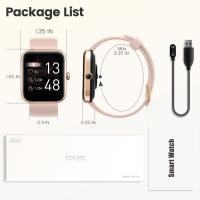When Screen Recording Does It Record Audio?
When it comes to screen recording, one of the most common questions is whether or not the software records audio. The answer isn't straightforward because the behavior of audio recording during screen capture depends on various factors, including the software used, the device settings, and user preferences. In this article, we will dive into the details of how screen recording works in terms of both video and audio capture, the settings that affect it, and the steps you can take to ensure you capture audio along with the video.

1. The Basics of Screen Recording
Screen recording is a feature provided by many devices and software applications that allows users to capture what is happening on their screens in real-time. Screen recording is widely used for creating tutorials, presentations, recording gameplay, and even capturing bugs or issues to share with support teams.
Typically, screen recording captures two main components:
- Video: This is the visual representation of what is happening on your screen.
- Audio: This can either be system audio (sounds coming from applications or websites) or microphone audio (your voice or external sounds being picked up by a microphone).
Depending on the software or platform you use, both of these components can be captured simultaneously, or you may have to configure settings to enable audio recording explicitly.
2. Does Screen Recording Record Audio by Default?
In many screen recording applications, audio recording is not enabled by default. This is done primarily to avoid unintentional capture of sensitive audio or background noise. However, some applications automatically record system or microphone audio if the settings allow it.
For example:
- Windows 10 and 11: The built-in Xbox Game Bar can record screen video and system audio, but microphone audio must be enabled separately.
- MacOS: The built-in screen recording tool (accessible through QuickTime or the screenshot toolbar) can capture video but does not record audio unless you use an external application or set specific permissions for system audio capture.
Thus, the default behavior largely depends on the OS and the application, but more often than not, you will need to manually adjust settings to enable audio capture.
3. Audio Types in Screen Recording
There are two primary types of audio you might want to capture during a screen recording:
a. System Audio (Computer Sound)
System audio refers to the sounds emitted by your computer, such as music, game sounds, or notification pings. This is usually what people want to capture when they are recording a gameplay session, a video tutorial, or any other application-based activity. Capturing system audio is crucial when you need the recorded video to be more engaging or informative, with sound playing a role in understanding the content.
For example, when recording gameplay, the sound effects, music, and voiceovers from the game are just as important as the visuals, and therefore, ensuring the system audio is recorded is a must.
b. Microphone Audio (External Sound)
Microphone audio captures sounds from external sources like your voice or ambient sounds through a connected microphone. This type of audio is commonly used in tutorial videos or presentations where the person speaking wants to narrate their actions on screen. In many screen recording applications, the microphone audio is optional, and you have to enable it manually.
For instance, if you’re creating a software tutorial and want to explain what you're doing on screen, enabling microphone audio is essential to ensure your voice is recorded alongside the video.
4. Enabling Audio in Screen Recording: The Settings You Need to Know
Depending on the software or device you're using for screen recording, there are different methods to ensure both video and audio are captured correctly. Let’s look at how to enable audio in some of the most popular screen recording platforms:
a. Windows 10 and 11: Xbox Game Bar
The Xbox Game Bar is a built-in tool for recording gameplay, but it can also be used for other screen recording purposes. Here's how to ensure audio is included in your recordings:
1. Open the Xbox Game Bar: Press `Win + G` to bring up the Game Bar.
2. Enable Microphone Audio: By default, microphone audio is turned off. You can enable it by clicking on the microphone icon in the Game Bar interface. Ensure the microphone icon is active when recording.
3. System Audio: The Game Bar records system audio automatically, so you don't need to do anything extra for that.
Note: If you want to record system audio separately from your voice, third-party tools might be needed, as the Xbox Game Bar doesn't have the flexibility to control multiple audio tracks.
b. MacOS: QuickTime Player
QuickTime Player, the default screen recording software on macOS, doesn’t automatically record audio, so you'll need an external tool or workaround to capture both system and microphone audio.
1. System Audio: To record system audio on macOS, you’ll need third-party software like BlackHole or Soundflower. These tools route your computer’s audio into QuickTime, allowing it to capture the sound.
2. Microphone Audio: QuickTime automatically records audio from your microphone when enabled. Before you start recording, go to File > New Screen Recording, and click on the small arrow next to the record button to select the microphone.
c. Third-Party Software: OBS Studio
OBS Studio is a powerful, open-source software widely used for screen recording and streaming. OBS offers a high degree of control over both video and audio sources.
1. System Audio: By default, OBS captures system audio through the default audio output device (such as your computer's speakers or headphones). You can configure OBS to capture audio from specific applications or devices as needed.
2. Microphone Audio: OBS automatically captures microphone audio if you select a microphone as a source. You can also adjust microphone volume levels independently of system audio.
This flexibility makes OBS an excellent choice for users who need to manage multiple audio sources (such as system sound and voiceover) in their recordings.
d. Online Screen Recorders
Many online tools such as Loom, Screencast-O-Matic, or RecordCast are used for quick screen recordings without needing to install software. Here’s how they handle audio:
1. System Audio: Some of these online tools, like Loom, can record system audio directly, while others require you to install a browser extension or additional plug-in to enable it.
2. Microphone Audio: Microphone recording is typically enabled by default. You may need to select the microphone input in the settings before you start recording.
5. Common Problems with Audio in Screen Recordings
While screen recording seems simple, users often encounter problems related to audio capture. Some of the most common issues include:
a. No Audio Recorded
- Problem: You start recording, but there's no audio in the final recording, or the sound is barely audible.
- Solution: Double-check your settings to ensure both system and microphone audio are enabled. If using third-party software, make sure that the correct input/output devices are selected, and check that your system’s audio is not muted.
b. Audio Sync Issues
- Problem: The audio and video are out of sync, making the recording feel unprofessional.
- Solution: This is often caused by performance issues, such as insufficient system resources or incorrect frame rates. Ensure your computer can handle the recording, close unnecessary programs, and check the recording frame rate settings. In OBS, ensure the audio sync offset is adjusted properly.
c. Low-Quality Audio
- Problem: The recorded audio sounds muffled, distorted, or noisy.
- Solution: Invest in a quality microphone and check your recording levels. If you're capturing system audio, ensure you're not overloading the input or using low-quality routing software.
6. Best Practices for Screen Recording with Audio
To get the best results from your screen recording sessions, follow these best practices:
- Test Before Recording: Always test your setup by recording a short clip to ensure both video and audio are captured as intended. Pay attention to both the clarity of the microphone audio and the system audio levels.
- Use High-Quality Equipment: For professional recordings, invest in a good microphone. The quality of the audio can make or break the recording, especially for voiceovers or presentations.
- Mute Unnecessary Sounds: If you’re recording a tutorial or video that involves narration, mute any unnecessary system sounds (such as notifications) that might interrupt your recording.
- Adjust the Audio Mix: If using multiple audio sources (such as system and microphone audio), adjust the balance to ensure one doesn’t overpower the other.
Conclusion
Screen recording software can capture both video and audio, but how it records audio depends on the software, device settings, and whether the user has enabled it. While many applications automatically capture system audio, microphone audio typically needs to be manually configured. Understanding how to properly set up audio recording can save you time and effort, ensuring that your screen recordings are of the highest quality. Whether you’re making tutorials, recording gameplay, or capturing online meetings, mastering screen recording with audio will enhance the value and clarity of your recordings, making them more engaging and professional.





































There are no comments for this blog.